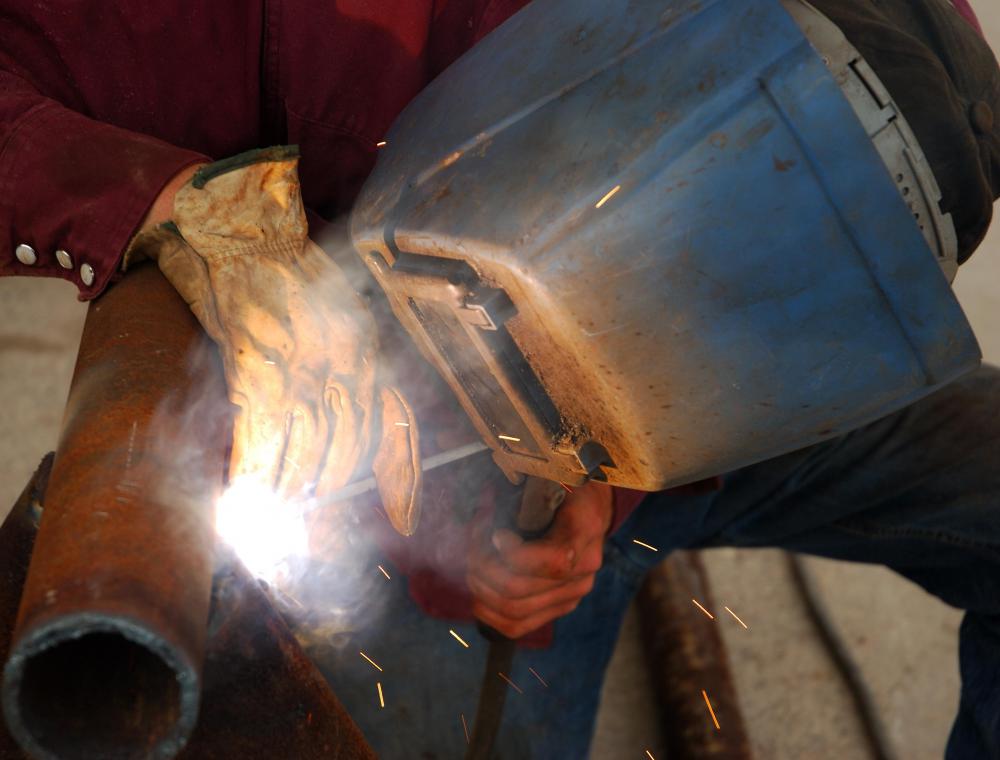At WiseGEEK, we're committed to delivering accurate, trustworthy information. Our expert-authored content is rigorously fact-checked and sourced from credible authorities. Discover how we uphold the highest standards in providing you with reliable knowledge.
How Do I Become a Structural Welder?
In order for you to become a structural welder, you will be required to learn to do much more than simply weld. You will have to meet specific physical fitness requirements, have a certain amount of physical dexterity and be able to weld in a variety of positions. Other requirements that must be met if you are to become a structural welder are concerned with your eyesight, ability to pass a certification exam, as well as your proficiency in several types of welding and cutting operations.
From stick welding to wire spool welding and torch and filler rod welding, you must become certified to show you are able to make acceptable welds using all styles of welding. The physical aspect of the job prohibits many would-be structural welders from becoming employed in this occupation. Depending on the area of the world in which you are seeking employment, you may be required to take and pass a physical agility test documenting your ability to lift a certain amount of weight, walk and move in a given manner and remain in an uncomfortable position for a predetermined amount of time if you are to become a structural welder.

In many areas, the steps to become a structural welder include your ability to not only be able to lift 100 pounds (45kg), but you must also be able to carry 50 pounds (23kg) over a given distance. While carrying the weight, you will be required to stoop, bend and crawl over a course to show your manual flexibility. You will also be required to stand in one spot for extended periods without relief in order to become certified as a structural welder.

The ability to manipulate welding equipment, such as welding vices, clamps and fixtures, is also a requirement of all prospective welders. This type of welding also mandates that you are able to adeptly weld with both hands, as well as overhead and in a variety of awkward positions. These positions often mandate 20/20 vision as well as very good hand-eye coordination. Depth perception is also a requirement of anyone wishing to become a structural welder. Some of the welding situations in this particular field can involve an extended arm and poor visibility, making sharp depth perception very critical to the success of anyone hoping to become a structural welder.
AS FEATURED ON:
AS FEATURED ON:













Discuss this Article
Post your comments